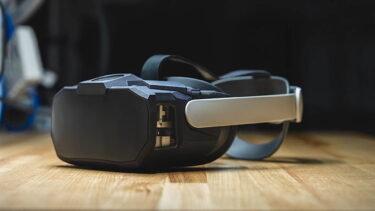Retina-resolution VR headsets are still a long way off, says Meta CTO

When will we see the first consumer headsets with retina-resolution displays? Here's what Meta's CTO says.
Andrew Bosworth was asked this very question in his recent AMA on Instagram. Bosworth answered:
In virtual reality displays, the way we measure resolution is pixels per degree. The total number of pixels doesn't totally matter because it has to do with how far are they from your eye and how does the lens remap them. And there's other things too that matter a lot, uniformity, how many pixels in the center versus the periphery and so on and so forth.
In Reality Labs research, we've had the team built these kinds of time machines to see where's the upper bound that our ability to distinguish, and it's pretty high. We build them up to like, I think 100 [PPD], and you can still tell. Now, there is a curve that kind of flattens out at a point where the incremental improvement that you can see between 80 and 100 isn't that much, but you can tell the difference.
And so I think it's pretty far up there. We don't know how to produce displays at that kind of density, the power required in the form factor required. Like it's we are not even there yet, so it's a ways off.
AdAd
Meta's "time machines" and the pursuit of retina-resolution headsets
Strictly speaking, a retinal VR display would be one where you could not tell the difference between a display and natural vision. In the VR industry, a PPD of 60 is generally considered the threshold for retinal resolution. However, human vision is capable of much more, as Bosworth points out.
Current devices are far from 100 PPD, let alone over it. According to Meta, the Quest 3 has a PPD of 25, the Vision Pro is estimated to be around 34 PPD, and the Varjo XR-4 achieves 51 PPD in the center of the screen.
By "time machines," Bosworth is referring to Meta's headset research prototypes, which are designed to provide a glimpse into the future and show how certain technologies could one day have an impact.
In 2022, Meta introduced the Butterscotch prototype, which has a PPD of 55. To achieve this, the team developed a new hybrid lens and reduced the field of view by half. This was followed in 2023 by the Butterscotch Varifocal, which added a varifocal display and offered a PPD of 60.
Both prototypes are not intended to become products, but are for research and demonstration purposes only.
Note: Links to online stores in articles can be so-called affiliate links. If you buy through this link, MIXED receives a commission from the provider. For you the price does not change.